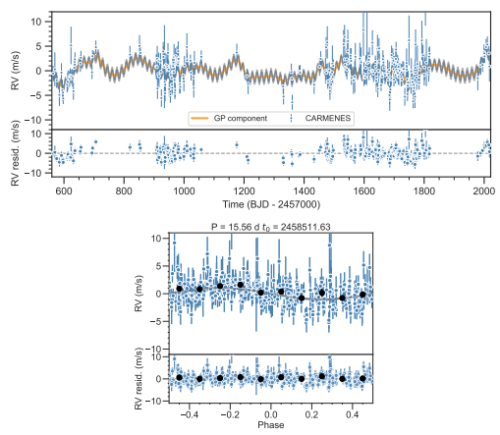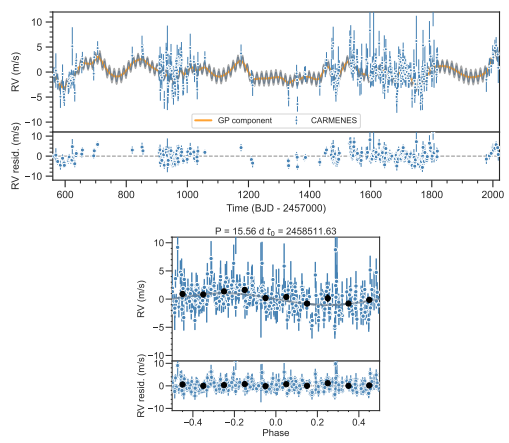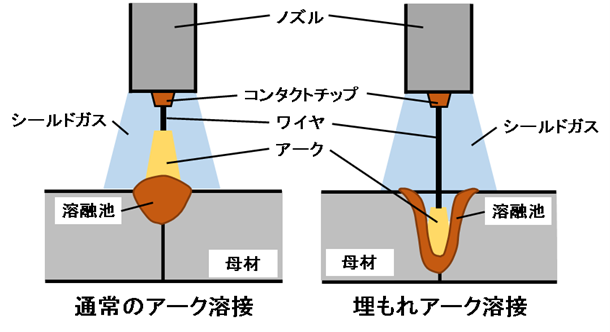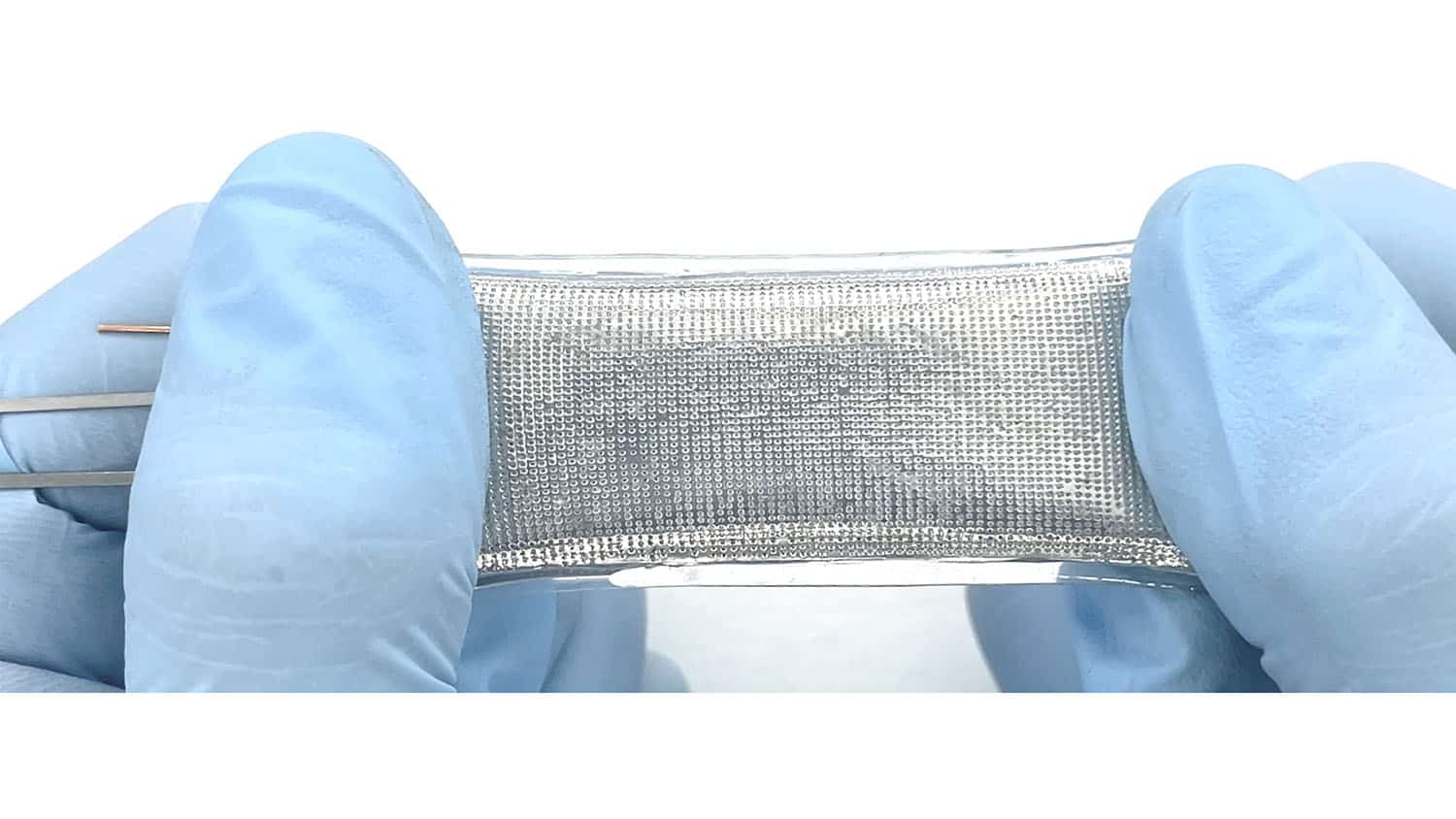生命の痕跡を探すのに適した、地球質量の希少な岩石質惑星を発見 Astronomers find rare Earth-mass rocky planet suitable for the search for signs of life
2023-02-03 マックス・プランク研究所
◆天文学者が太陽系外の惑星を探すとき、特に興味を持つのが「地球のような惑星」です。これまでに発見された5,000個以上の太陽系外惑星のうち、地球のような質量を持ち、ハビタブルゾーン(惑星表面で水が液体の状態を保てる範囲)に存在するものは、わずか10数個に過ぎないのです。ウルフ1069bによって、生命が進化した可能性のある太陽系外惑星の候補が1つ増えたことになる。
◆このような低質量惑星を検出することは、まだ大きな課題である。ハイデルベルクにあるマックス・プランク天文研究所のダイアナ・コサコフスキーと彼女のチームは、この課題に取り組みました。カルメネス」プロジェクトの一環として、居住可能な惑星を探索するための特別な装置が開発されたのです。カルメネス」チームは、この装置をスペインのカラール・アルト天文台で使用しています。「ウルフ1069星のデータを分析したところ、およそ地球質量の惑星と思われる明確で低振幅のシグナルを発見しました」とダイアナ・コサコフスキーは言う。「この惑星の軌道は15.6日で、地球と太陽の距離の15分の1に相当します」と、ダイアナ・コサコフスキーは述べている。
◆30年前に太陽系外惑星が発見されて以来、太陽系外惑星の探査は飛躍的な進歩を遂げてきました。しかし、地球のような質量と直径をもつ惑星を発見するために天文学者が求めるサインは、比較的弱く、データから抽出するのが難しいのです。Carmenesチームは、恒星のスペクトルの中にある小さな周期的な周波数のずれを探しています。これは、伴星がその重力によって主星を引っ張り、主星をぐらつかせることによって生じると予想されます。その結果、ドップラー効果によって、地球上で観測される光の周波数が変化するのです。ウルフ1069と新発見の惑星の場合、この揺らぎが測定可能なほど大きいのです。その理由の一つは、恒星と惑星の質量差が比較的小さいため、共有する質量の中心を中心とした星のゆらぎが他のケースよりも顕著に現れることです。この周期的な信号から、惑星の質量も推定することができる。
<関連情報>
- https://www.mpg.de/19798012/exoplanet-earth-like-habitable?c=2249
- https://www.aanda.org/component/article?access=doi&doi=10.1051/0004-6361/202245322
M矮星周辺の系外惑星を探索する「CARMENES」、ウルフ1069 b:近傍の超低質量星のハビタブルゾーンにある地球質量の惑星 The CARMENES search for exoplanets around M dwarfs, Wolf 1069 b: Earth-mass planet in the habitable zone of a nearby, very low-mass star
D. Kossakowski, M. Kürster, T. Trifonov, Th. Henning, J. Kemmer, J. A. Caballero, R. Burn, S. Sabotta, J. S. Crouse, T. J. Fauchez, E. Nagel, A. Kaminski, E. Herrero, E. Rodríguez, E. González-Álvarez, A. Quirrenbach, P. J. Amado, I. Ribas, A. Reiners, J. Aceituno, V. J. S. Béjar, D. Baroch, S. T. Bastelberger, P. Chaturvedi, C. Cifuentes, S. Dreizler, S. V. Jeffers, R. Kopparapu, M. Lafarga, M. J. López-González, S. Martí n-Ruiz, D. Montes, J. C. Morales, E. Pallé, A. Pavlov, S. Pedraz, V. Perdelwitz, M. Pérez-Torres, M. Perger, S. Reffert, C. Rodríguez López, M. Schlecker, P. Schöfer, A. Schweitzer, Y. Shan, A. Shields, S. Stock, E. Wolf, M. R. Zapatero Osorio, M. Zechmeister
Astronomy & Astrophysics accepted: 21 December 2022
DOI:https://doi.org/10.1051/0004-6361/202245322

ABSTRACT
We present the discovery of an Earth-mass planet (Mbsini=1.36±0.21M⊕) on a 15.6d orbit of a relatively nearby (d∼9.6pc) and low-mass (0.167±0.011M⊙) M5.0V star, Wolf 1069. Sitting at a separation of 0.0672±0.0014au away from the host star puts Wolf 1069b in the habitable zone (HZ), receiving an incident flux of S=0.652±0.029S⊕. The planetary signal was detected using telluric-corrected radial-velocity (RV) data from the CARMENES spectrograph, amounting to a total of 262 spectroscopic observations covering almost four years. There are additional long-period signals in the RVs, one of which we attribute to the stellar rotation period. This is possible thanks to our photometric analysis including new, well-sampled monitoring campaigns undergone with the OSN and TJO facilities that supplement archival photometry (i.e., from MEarth and SuperWASP), and this yielded an updated rotational period range of Prot=150−170d, with a likely value at 169.3+3.7−3.6d. The stellar activity indicators provided by the CARMENES spectra likewise demonstrate evidence for the slow rotation period, though not as accurately due to possible factors such as signal aliasing or spot evolution. Our detectability limits indicate that additional planets more massive than one Earth mass with orbital periods of less than 10 days can be ruled out, suggesting that perhaps Wolf 1069 b had a violent formation history. This planet is also the 6th closest Earth-mass planet situated in the conservative HZ, after Proxima Centauri b, GJ 1061d, Teegarden’s Star c, and GJ 1002 b and c. Despite not transiting, Wolf 1069b is nonetheless a very promising target for future three-dimensional climate models to investigate various habitability cases as well as for sub-ms−1 RV campaigns to search for potential inner sub-Earth-mass planets in order to test planet formation theories.




